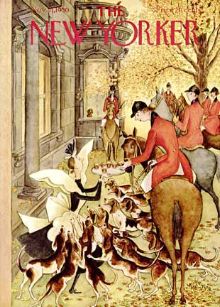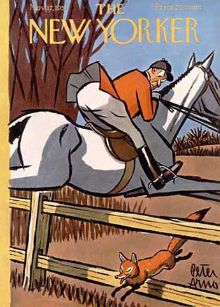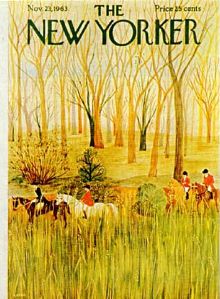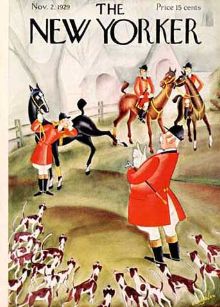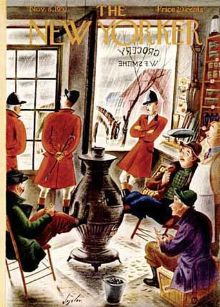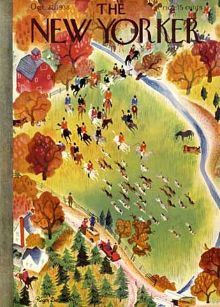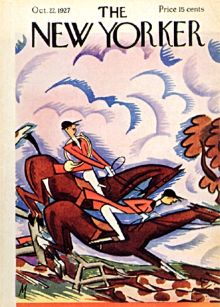Tradition
About Andrew Cusack
 Writer, web designer, etc.; born in New York; educated in Argentina, Scotland, and South Africa; now based in London.
Writer, web designer, etc.; born in New York; educated in Argentina, Scotland, and South Africa; now based in London. read more
News
Blogs
Reviews & Periodicals
Arts & Design
World
France
Mitteleuropa
Knickerbockers
Argentina
The Levant
Africa
Cape of Good Hope
Netherlands
Scandinavia
Québec
India
Muscovy
Germany
Academica
Thanksgiving
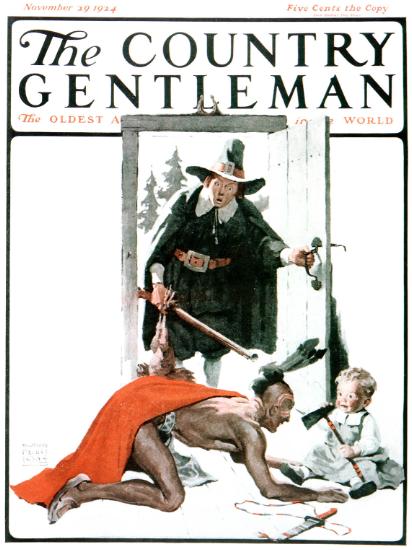
ALMIGHTY and gracious Father, we give you thanks for the fruits of the earth in their season and for the labors of those who harvest them. Make us, we beseech thee, faithful stewards of thy great bounty, for the provision of our necessities and the relief of all who are in need, to the glory of thy Name; through Jesus Christ our Lord, who liveth and reigneth with thee and the Holy Spirit, one God, now and for ever. Amen.
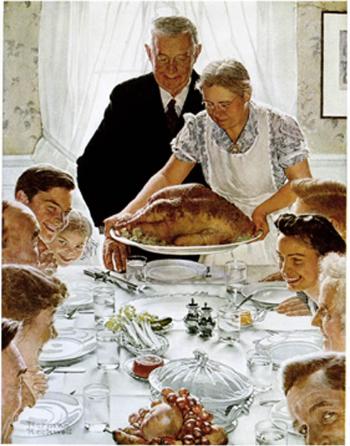
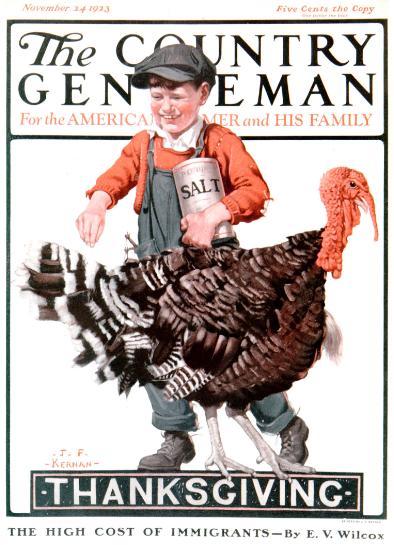
For Their Tommorrow, We Gave Our Today


Strange as it may seem, Remembrance Day is perhaps my favorite time in the entire British year. It is somewhat surprising that despite the cultural revolution of the past few decades, despite the intellectual, academic, and political assaults on tradition, history, the military, and the time-honoured institutions of this realm, Remembrance Day remains and is widely commemorated. Three times this Remembrancetide I had the opportunity to partake in the annual two minutes silence: first, on the eleventh hour of the eleventh day of the eleventh month (Remembrance Day itself), then the following evening while watching the unbeatable Festival of Remembrance at the Royal Albert Hall on television, then the following morning at the Remembrance Sunday chapel service, which was followed by the joint service of town and gown at the War Memorial.
It is my firm belief that you can discern a great deal about a country from its ceremonial culture. From the naked paganism of Nazi Germany and the Stalinist banality of Soviet Russia to the splendid majesty of Great Britain and the restrained republicanism of the United States, rituals are not empty acts, but are indeed indicative of an inner soul, an essence.
Most of our readers will not be familiar with the workings of Remembrance Day in Britain. The climax to a typical Act of Remembrance is the two minutes of silence in remembrance of and thanksgiving for the great sacrifice made during all wars. Usually, there are two particular brief epigrams of sorts read, one before and one after the two minutes of silence.
They shall grow not old, as we that are left grow old:
Age shall not weary them, nor the years contemn.
At the going down of the sun and in the morning
We will remember them.
We will remember them.
When You Go Home,
Tell Them Of Us And Say,
For Their Tomorrow,
We Gave Our Today.
The two minutes of silence is one of the few remnants of dignity in this land. Two minutes in which the entire nation comes to a halt. Railway stations, public streets, shops, offices, even the busy stock exchange come to a complete halt as we stand, silently, to remember uncountable deeds and intangible sacrifice.
America, of course, does not have the culture of Remembrance Day, but celebrates the day as Veterans Day instead. The United States was exposed to the massive slaughter of modern warfare a full fifty years before the Great War so shocked Europe. To this day, no war has claimed the lives of as many Americans as did the Civil War, which led to the creation of Memorial Day. One of the many blessings bestowed upon our country is that we have never had to suffer on such a great scale in our own homeland again, while Europe has witnessed warfare as recently as a few years ago in the Balkans.
The Balkans was where it all started, after all, on that fateful day in Sarajevo, June 1914. The greatest reflection I have read this Remembrance Sunday was Gerald Warner’s column printed in the latest Scotland on Sunday. It is well worth registering with scotsman.com for. Read it.
The New Yorker Hunts
Windy Hollow, Millbrook, Rombout, Smithtown — doubtless these words mean nothing to many but to the huntsmen (and -women) of New York they are immediately recognised as the names of some of the Empire State’s hunts.
These four hunts are just some of the survivors but there were once many more packs of hounds across the state. Long Island before the second war was excellent hunt country but thanks to rapid suburbanisation and cultural changes only the Smithtown Hunt survives there.
Still, hunting loomed large enough in the imagination that it featured on the front cover of The New Yorker with some regularity.
Indeed the very week of the Kennedy assassination, houses up and down Manhattan and the whole East Coast would have had their copy of the magazine with a hunting scene front and centre. (President Kennedy did ride, but of the two of them it was the First Lady who was keener on the hunt.)
Here are just a few of the covers I’ve found.
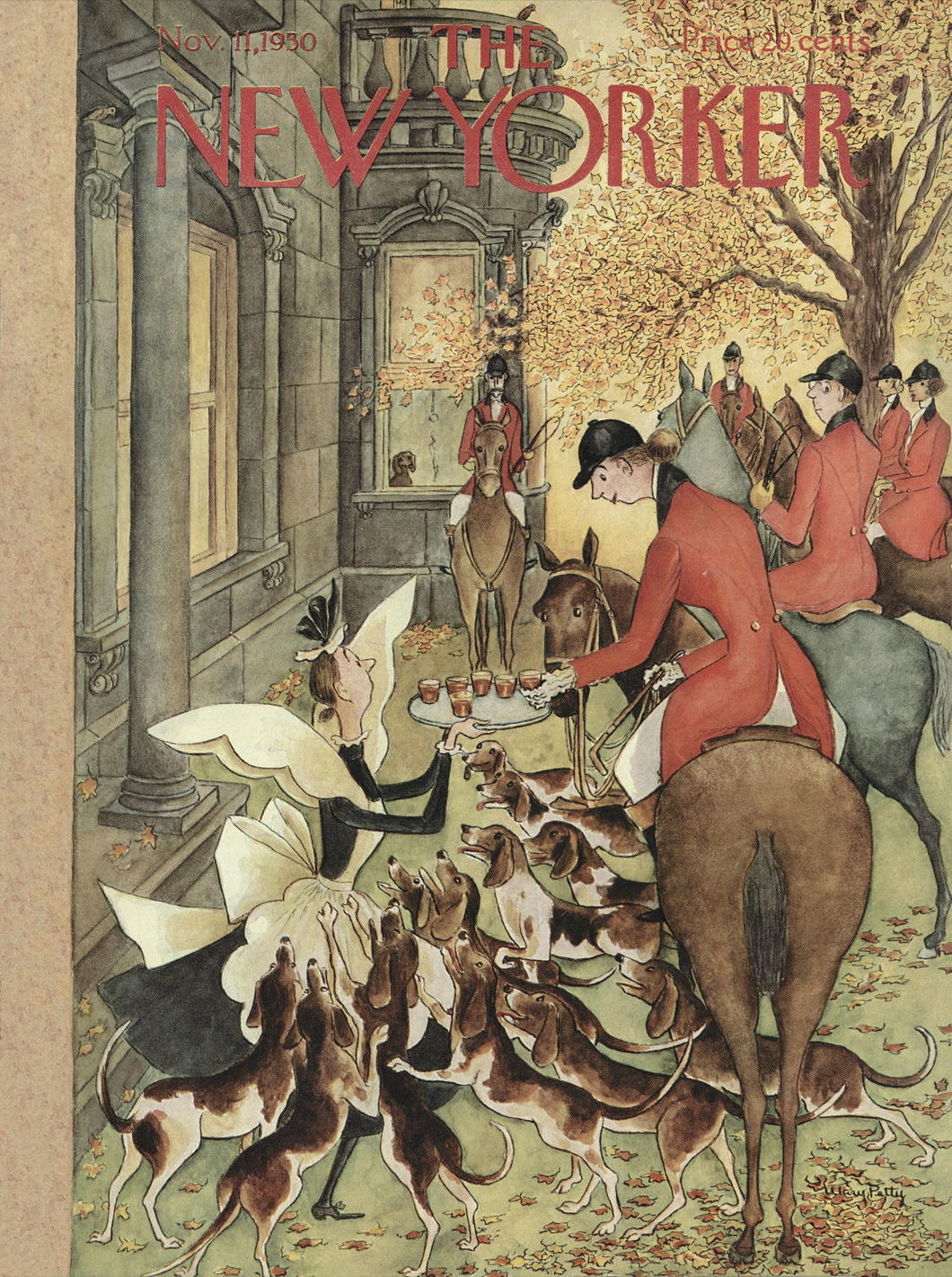
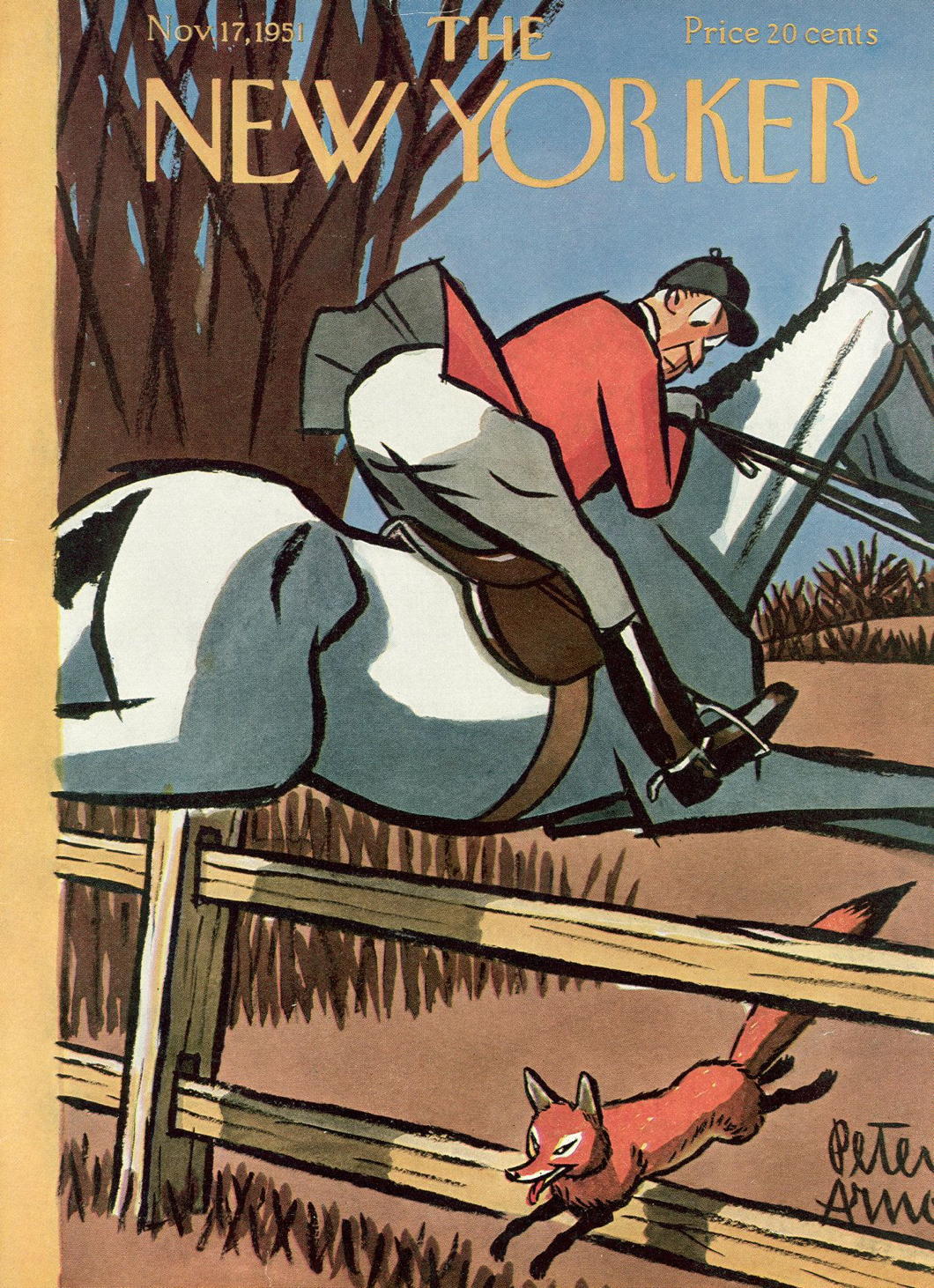
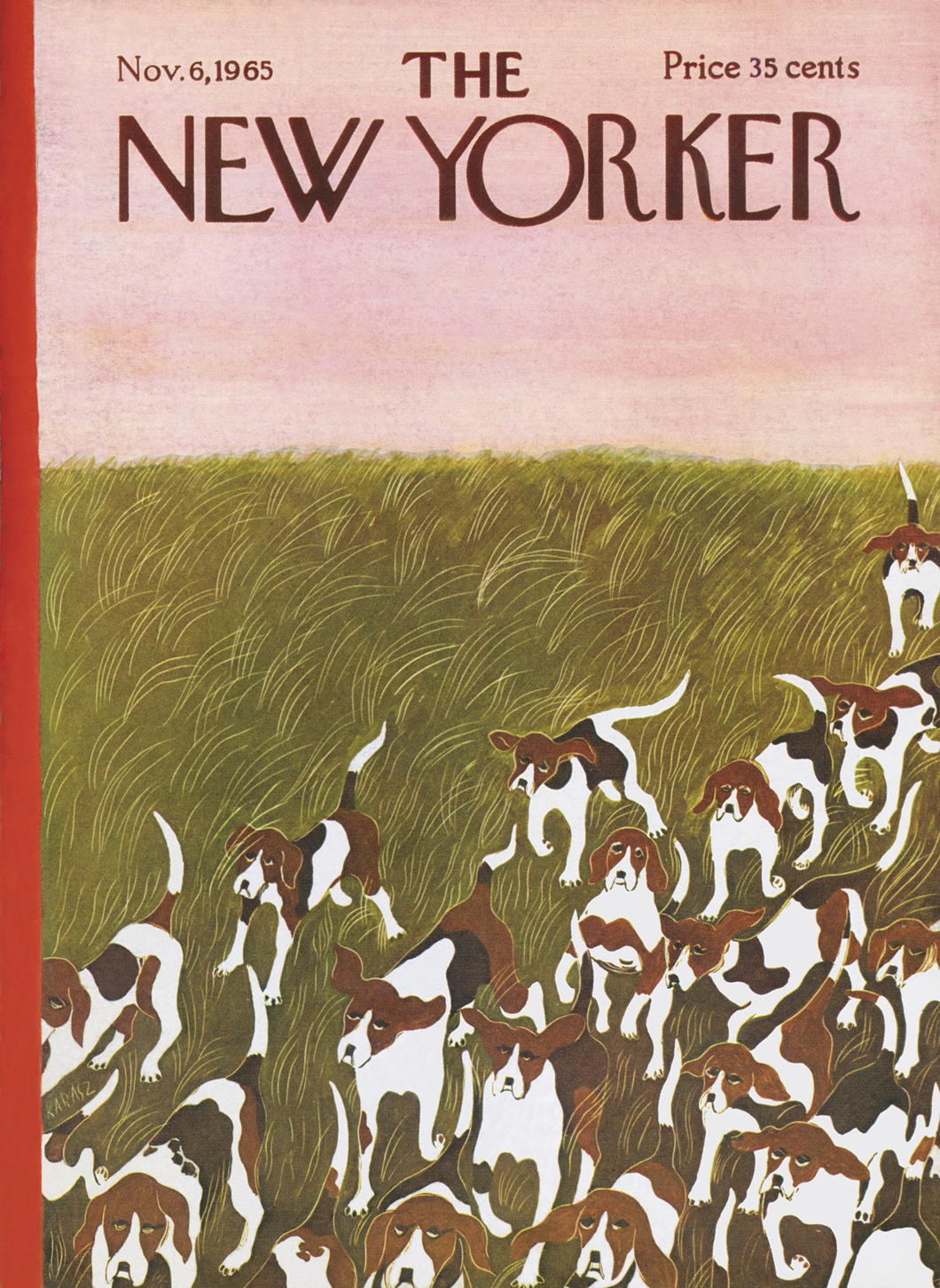
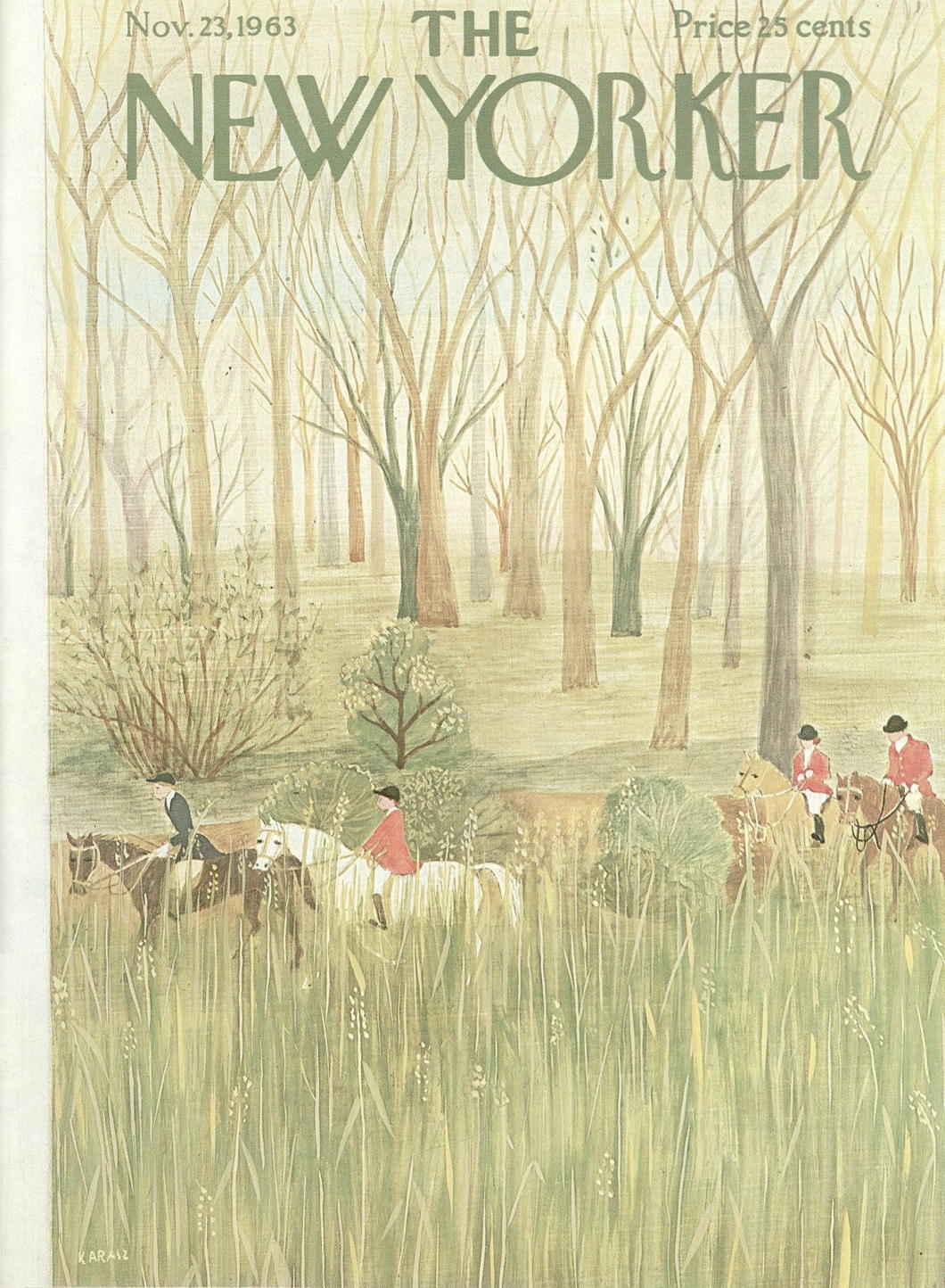
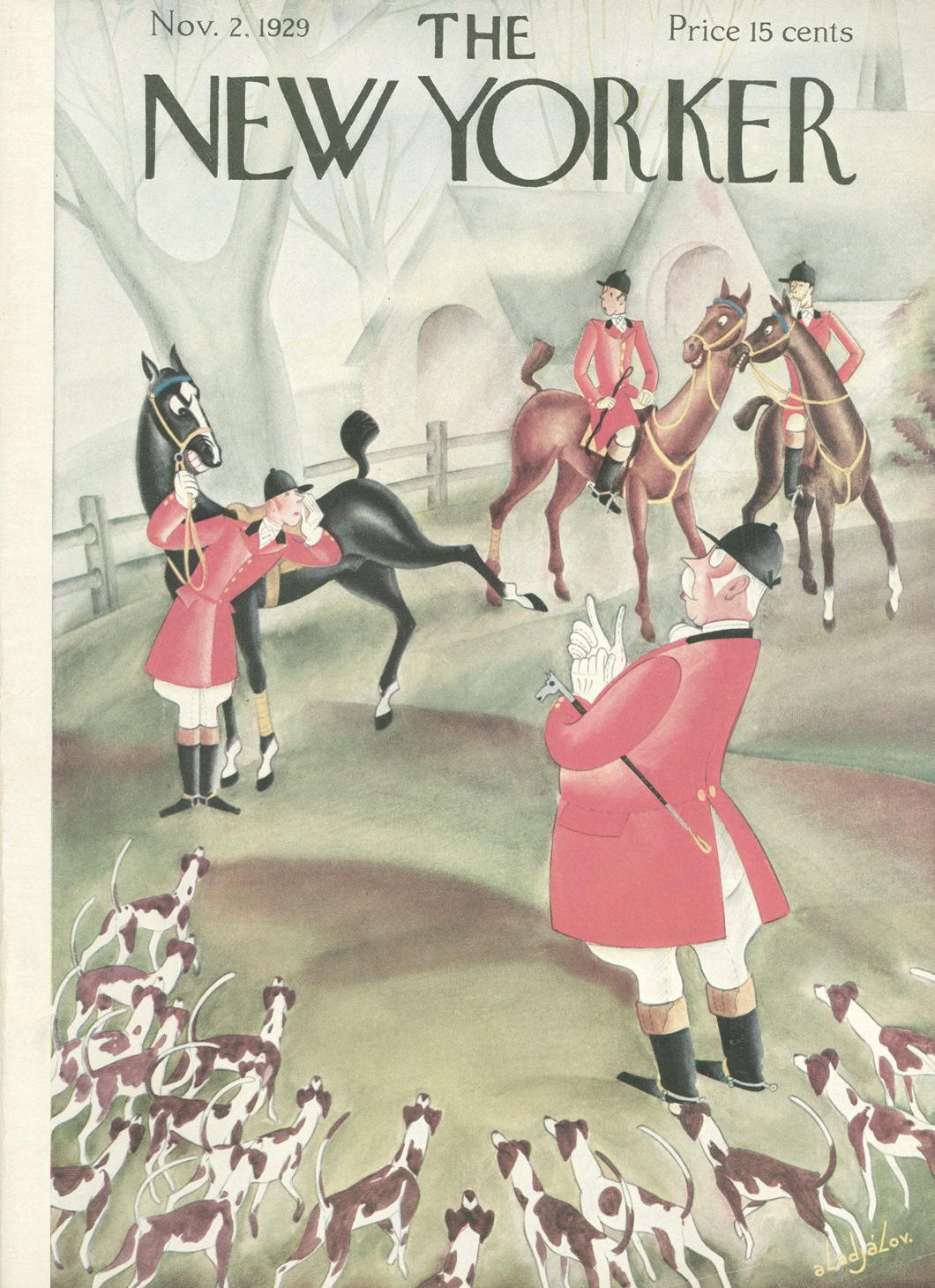
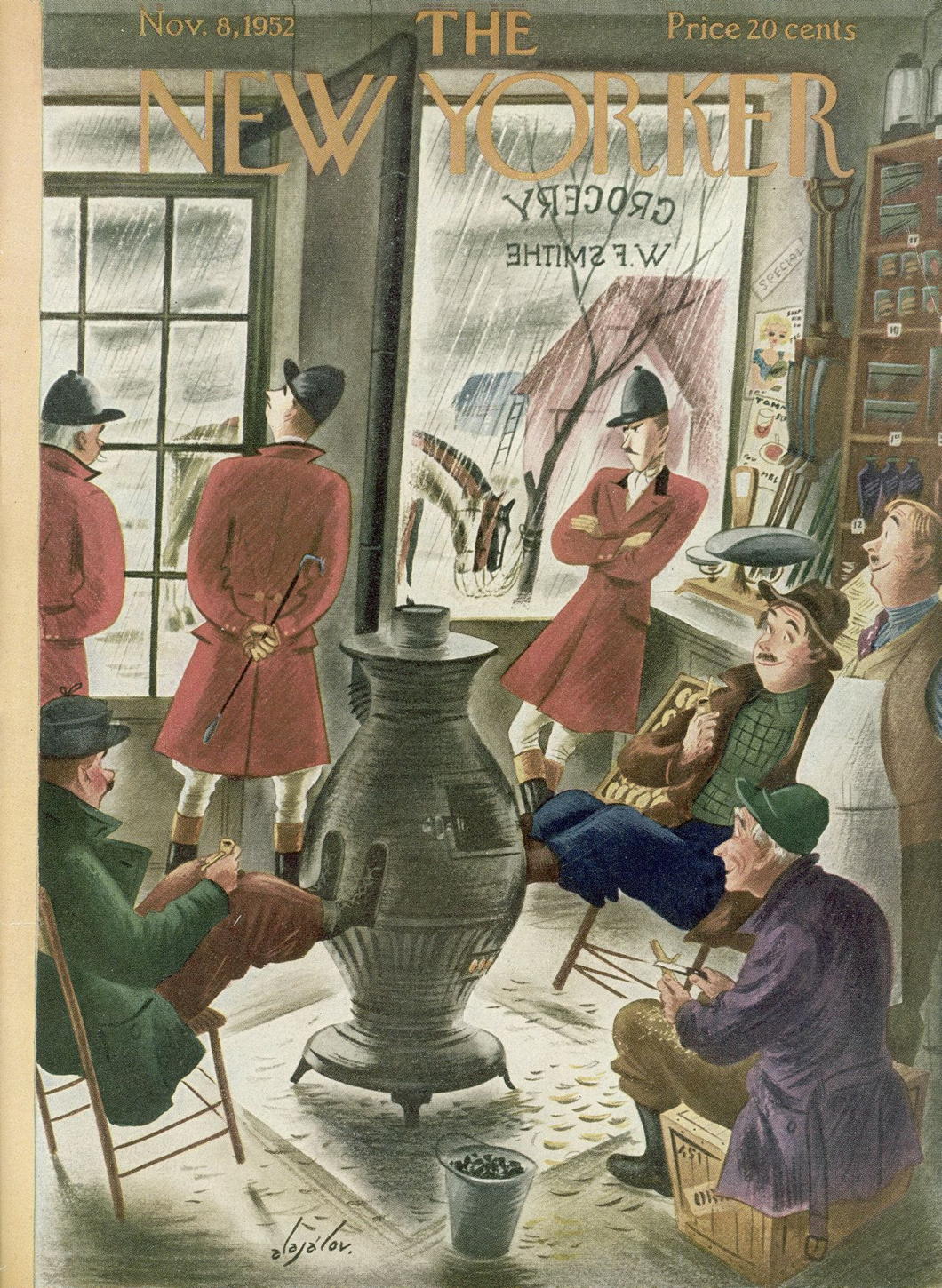
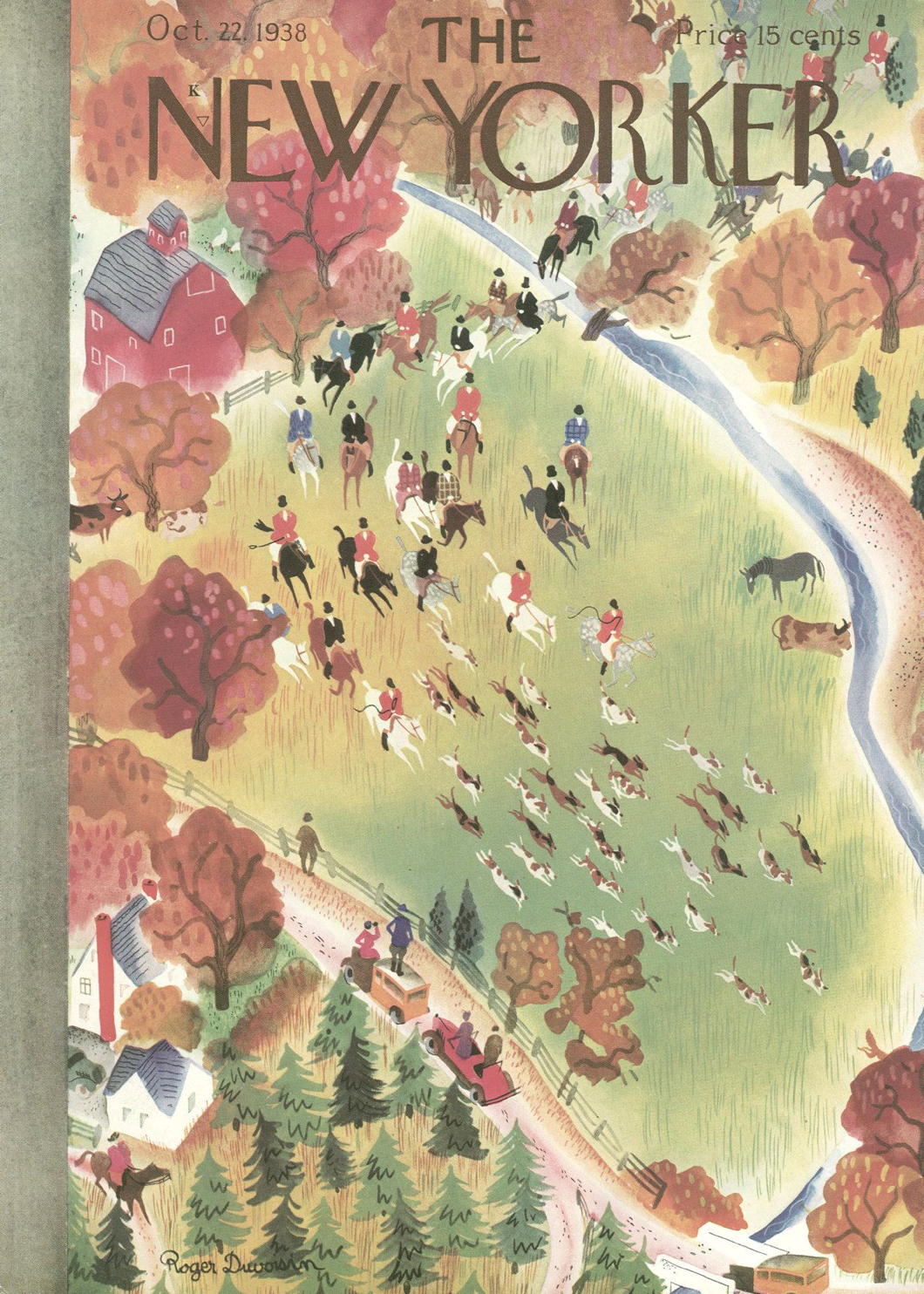
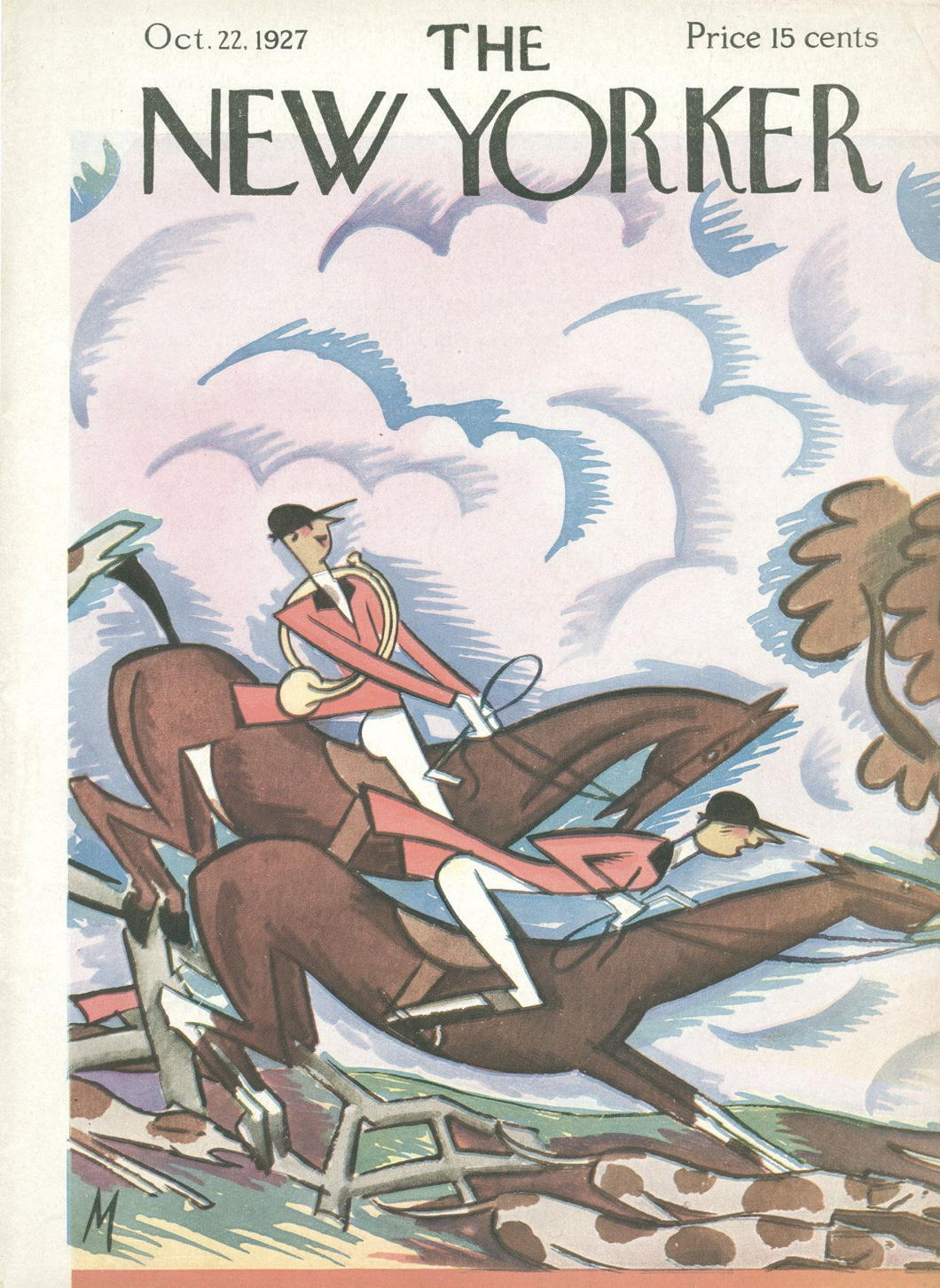
Tally Ho, Empire State!
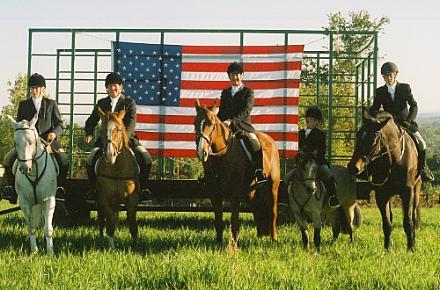
Much was made over the recent start of the hunt season here in the United Kingdom in spite of Comrade Blair’s ban, but New Yorkers mount their horses a little earlier. Above, a few members of the Windy Hollow Hunt in front of Old Glory.
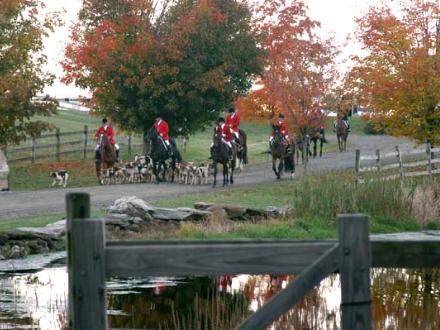
The Rombout Hunt, in the Hudson Valley.

This little fellow from Long Island’s Smithtown Hunt wants out so he can hunt down that dagnabbed fox!

The Smithtown Hunt in the field.
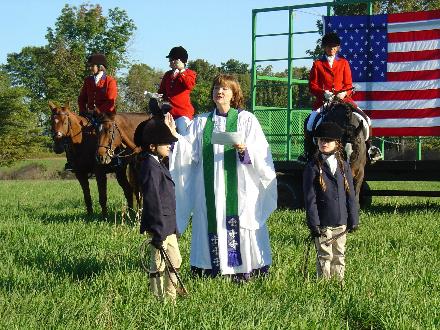
Of course not all things stay the same. This year Orange County’s Windy Hollow Hunt got a lady to perform the annual Blessing of the Hounds.
One of my favorite New Yorker cartoons has to do with the Blessing of the Hounds. I can’t find it online, so I’ll wait until I’m home and then scan in it for your enjoyment.
Below, the Genesee Valley Hunt.
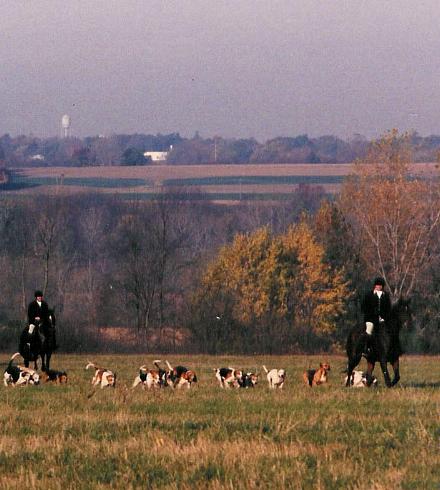
Bill and Ted
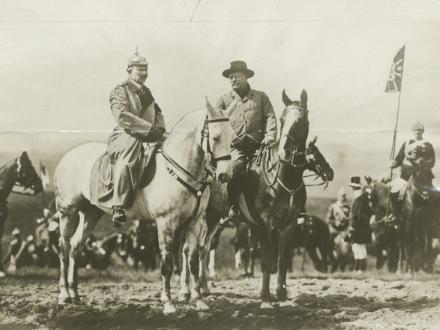
His Imperial Majesty Wilhelm II, the German Emperor, and His Excellency Mr. Theodore Roosevelt, President of the United States of America.
Old Guardsmen
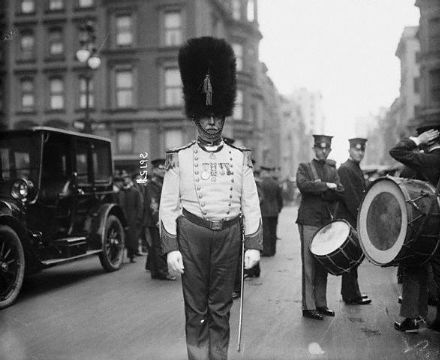
Ardolph Loges Kline, one of my grandfather’s predecessors as Commander of the Old Guard of the City of New York, on the 89th Anniversary of the Old Guard, April 22, 1915. Kline was the acting Mayor of New York who started the annual tradition of lighting the Christmas Tree in City Hall Park (or ‘holiday tree’ as it is now officially called). This ceremony has since been eclipsed in popularity by the Rockefeller Center tree lighting, but still takes place every year.
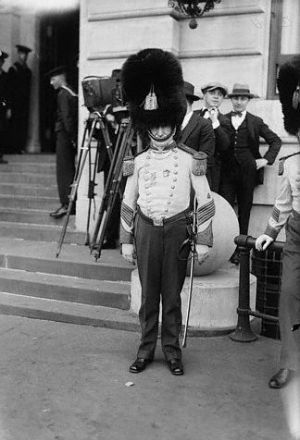
Here we have C.H. Heustis on his 85th birthday in 1922. Heustis served in General Burnside’s brigade during the Civil War, later becoming a broker on Wall Street. He never missed a single meeting or parade of the Old Guard once he joined.
From the Bettmann archive.
Previously: The Old Guard | Grandpa
Flying the Flag
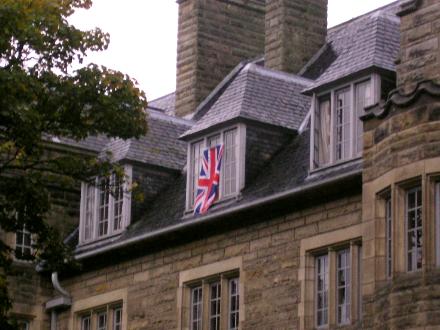
Despite the ban on students flying flags from their windows, I’m happy to say that four students hung Union Jacks out their windows in St Salvator’s Hall today to mark the Battle of Trafalgar. Two were on the front side of hall, two on the back. I took photos of the two on the front side. Mine is above, and the other one below (I don’t know to whom the room belongs).
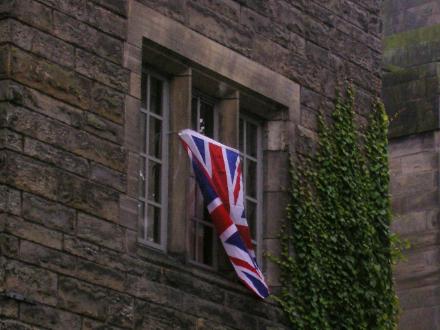
Happy Trafalgar Day!

Twas on this day two centuries ago that the Royal Navy under Lord Nelson gave the combined French and Spanish fleet a right good whalloping, thus ensuring that freedom and responsible constitutional government would flourish and spread for two centuries afterward.
So today we raise a glass to Lord Nelson, and spit on the name Bonaparte! (And Hitler, and Stalin, and Brussels, and any such nastiness the continent dare throw against the English-speaking peoples of the world!).
Arose from out the azure main;
This was the charter of the land,
And guardian angels sang this strain:
Rule, Britannia!
Britannia, rule the waves;
Britons never shall be slaves.
The nations not so blest as thee,
Shall in their turns to tyrants fall;
While thou shalt flourish great and free,
The dread and envy of them all.
Rule, Britannia!
Britannia, rule the waves;
Britons never shall be slaves.
Still mor majestic shalt thou rise,
More dreadful from each foreign stroke;
As the loud blast that tears the skies,
Serves but to root thy native oak.
Rule, Britannia!
Britannia, rule the waves;
Britons never shall be slaves.
Thee haughty tyrants ne’er shall tame,
All their attempts to bend thee down;
Will but arouse thy generous flame,
But work their woe, and thy renown.
Rule, Britannia!
Britannia, rule the waves;
Britons never shall be slaves.
To thee belongs the rural reign,
They cities shall with commerce shine;
All thine shall be the subject main,
And every shore it circles thine.
Rule, Britannia!
Britannia, rule the waves;
Britons never shall be slaves.
The Muses, still with freedom found,
Shall to thy happy coast repair;
Blest Isle! With matchless beauty crowned,
And manly hearts to guide the fair.
Rule, Britannia!
Britannia, rule the waves;
Britons never shall be slaves.
The Old Guard
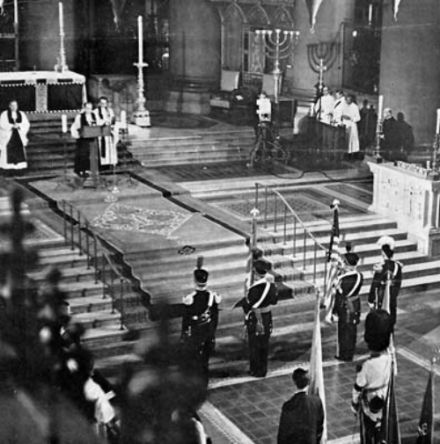
The above photograph shows a 1963 service in the Cathedral of St. John the Divine, New York. Closest to the sanctuary are four members of the Veteran Corps of Artillery, State of New York, but behind them can be scene a member of the Old Guard of the City of New York. The VCA, of which my Uncle Matt (a frequent commenter upon this site) is a member, is older, being founded in 1790. The Old Guard dates from 1826, and Uncle Matt’s father (my grandpa) was Commadant of that august group. There’s a great photo of my father as a small child gazing up at his father in Old Guard uniform including the tall bearskin busby. Perhaps Pop will scan it sometime, else I will get around to it when I’m back in the States.
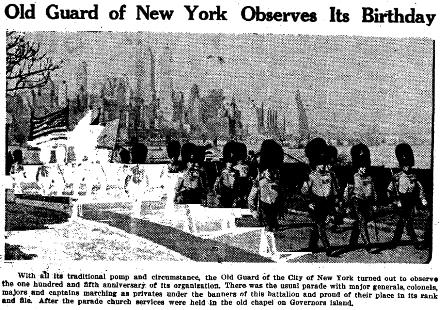
With all its traditional pomp and circumstance, the Old Guard of the City of New York turned out to observe the one hundred and fifth anniversary of its organization. There was the usual parade with major generals, colonels, majors, and captains marching as privates under the banners of this battalion and proud of their place in its rank and file. After the parade church services were held in the old chapel on Governors Island.
(A bad copy from The Sun, Fort Covington, NY, 1931)
A Tower of Tradition in Suffolk
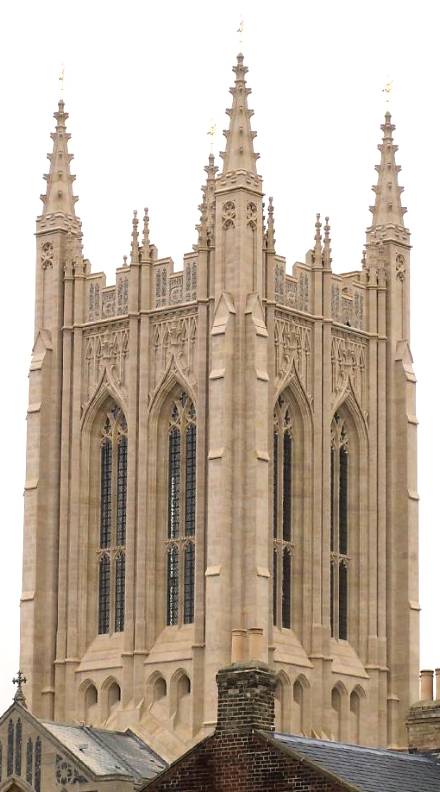
THE LAST UNFINISHED cathedral in the Church of England was finally finished this year with the completion of the crossing tower of St. Edmundsbury Cathedral. The tower was not only designed in the Suffolk perpindicular style but also constructed using traditional techniques. The brick and masonry spire is held together by lime mortar, without an inch of steel or concrete.
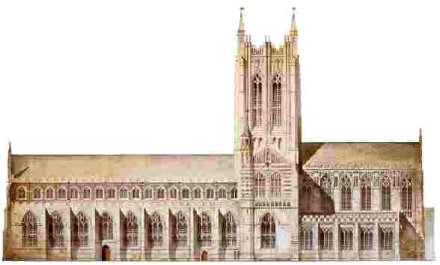
The Cathedral is built on the grounds which still contain the ruins of the great abbey of Bury St Edmunds. The site of the current cathedral has held a church since 1065, completely rebuilt on three or four occasions. The current chancel dated from 1865, while the nave was begun centuries before in 1503. (more…)
A Hop Over to Cusack’s Room
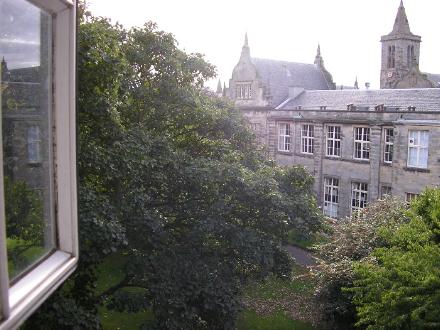
Dear friends, I have been absent from the “world wide web” of late owing to technological discrepancies. Rest assured by health and faith are still strong. No doubt you have felt a distinct lack during the past few days, which I hope to remedy by showing you a few photos of the locus in which my quotidian adventures take place.
Above is the view from the reading ledge by my window. A rather nifty thing, which obliges the requirements for some occasional fresh air along with an advantageous location from which to glance down upon the Principal’s Lawn (There’s a fine if he catches you treading on his little green patch).
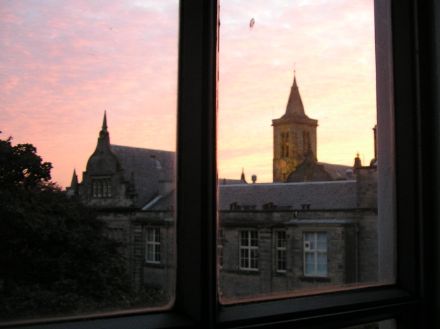
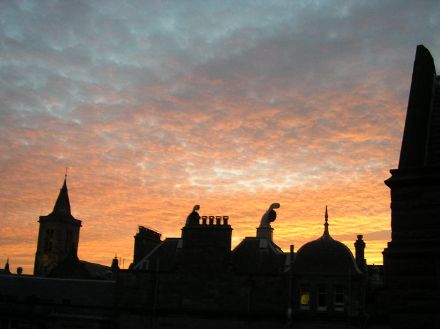
Sunset from the Cusack chamber. (more…)
Cassock Pursuivant
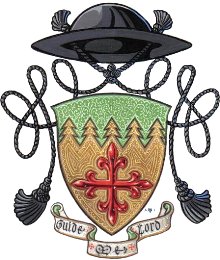 Last night the G&B played host to a lecture by one Fr. Guy Selvester, America’s ecclesiastical heraldist extraordinaire (arms at right). The good Reverend clearly has an unadulterated and unaffected love for heraldry, which, as he was very keen to point out, is unquestionably both an art and a science. He also has flaming red sideburns which give one the vague impression that he was a Civil War chaplain in a past life. After a brief introduction from a member of the G&B’s heraldry committee, the cassocked Father Guy gave a very clear and well-delivered talk, amply displaying his broad and deep knowledge of the subject, especially when responding to off-the-cuff inquiries from the audience.
Last night the G&B played host to a lecture by one Fr. Guy Selvester, America’s ecclesiastical heraldist extraordinaire (arms at right). The good Reverend clearly has an unadulterated and unaffected love for heraldry, which, as he was very keen to point out, is unquestionably both an art and a science. He also has flaming red sideburns which give one the vague impression that he was a Civil War chaplain in a past life. After a brief introduction from a member of the G&B’s heraldry committee, the cassocked Father Guy gave a very clear and well-delivered talk, amply displaying his broad and deep knowledge of the subject, especially when responding to off-the-cuff inquiries from the audience.
Of course no talk on ecclesiastical heraldry would be complete without mentioning the late Bruno Heim, the expert on church heraldry as well as Grand Prior of the Constantinian Order and the first full papal nuncio to the Court of St. James since the Reformation. Heim’s book Heraldry in the Catholic Church (available in the St Andrews University Library) is the essential work on the subject. Fr. Selvester interestingly pointed out that Blessed Pope John XXIII intended to found a heraldic authority for the Church. He was dissuaded from this task by none other than Archbishop Heim, who believed the Church covered too far broad a swathe to effectively and appropriately constitute its own heraldic authority mindful of the vernacular traditions. (more…)
Super-Regiment My Foot!
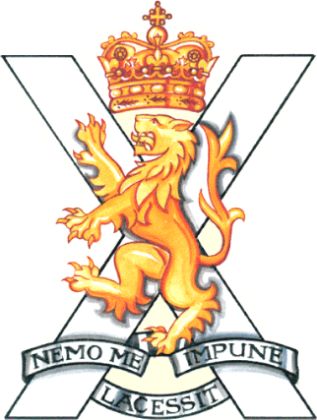
As the reader may well be aware, the last remaining six of Scotland’s historic Army regiments, one of which is so old that it is knicknamed ‘Pontius Pilate’s Bodyguard’, are to be merged into a new ‘super-regiment’ of six battallions, to be called the Royal Regiment of Scotland. Furthermore, the Royals Scots and the Kings Own Scottish Borderers are to be merged into a single battallion. In attempt to calm the fury which this announcement unleashed, government ministers promised that the six regiments would retain their historic identities and legacies as they transform into battallions of the new super-regiment by retaining their cap badges.
However, government ministers lie. A few weeks ago the new cap badge of the Royal Regiment of Scotland was unveiled, and all batallions will be required to wear it. It is simple and aesthetically pleasing, but none of these qualities really matter. It will be remembered not for its beauty but for the outrageous betrayal of tradition and common sense which will, I dare say, tar the Royal Regiment of Scotland for a very long time. There are, of course, last ditch efforts by politicians of all stripes and sizes to save the regiments, an important part of both Scotland’s history and present, but there is not much hope. What Downing Street says goes, irrespective of centuries of tradition, common sense, a public outcry, and the will of the people. Strange as it may seem, after these changes Canada will have more Scottish regiments than Scotland.
Meanwhile, Ian Hamilton ruefully mourns the lack of pomp at the recent opening of the Scottish parliament in the Sunday Times.
Remembering Gemayel

September 14 is the twenty-third anniversary of the assasination of the Catholic general and politician Bachir Gemayel by Syrian agents, only nine days before he was to be inaugurated as President of Lebanon. Gemayel was the son of Pierre Gemayel, the founder of the Lebanese Kataeb (Phalange) which Bachir eventually led himself, and was also instrumental in unifying the Christian militias of the country into the Lebanese Forces, which joined with the conventional Lebanese Armed Forces in their 100-day attempt to expel the Syrians from Lebanon in 1978.
A massive bomb exploded in the Kataeb headquarters on September 14, 1982, killing the President-elect and twenty-four other souls. The assasination only further escalated the violence of the Civil War, a conflict which was taken to regretable extremes by all the parties invovled. (more…)
What To Do When You Find a Hohenzollern in Your Study

The man of letters, of course, needs a place in which to withdraw from his various dalliances in the social realm and to concentrate on the dominion of learning; a private place in which to enjoy a book, broadsheet or other periodical, or perhaps to brood in a comfortable chair with a dram of scotch and some sound music. The ladyfolk, needless to say, have no place in such a bailiwick, not even to clean, for the wise gentleman knows that a study which accumulates in dust likewise accumulates in a certain intangible value. After all, what man of letters does not relish in removing his 1928 Burns and Oates edition of Martyrs of the Upper Volta from the shelves, blowing the dust from the cover, and charging inwards to read of some blessed soul who met his end in a steamy cauldron?
What then could throw arcadian bliss into disarray quite as much as the sudden appearance of Kaiser Wilhelm? A Hapsburg? You may as well have invited! A Bourbon? Well, fair enough, they have been known to lose their heads. But a Hohenzollern? You’ve got your work cut out for you.
Once considered the seminal work on dealing with Spontaneous Hohenzollern Appearances (or ‘SHA’), Dr. Leo von Fulbreck’s Treatise on the Treatment of Hohenzollernitosicity (to use the old, politically-incorrect term for SHA), has since been discredited, perhaps unjustly due to the Sparticist leanings of the Thuringian professor. The 1919 U.S. War Department guide War Department Field Guide 24-R: Recommended Courses of Action in Event of Hohenzollern Situation (and its appendix 24-R(II) dealing with the Hohenzollern-Sigmaringen branch) perpetuated the essence of von Fulbreck’s theories shorn of their ideological slant. The Second-World-War-era Your Enemy: the Sudden Hun-henzollern released by the British Department of Information, however, is generally considered unreliable. Combing through all this mess, I have endeavoured to deliver as part of my contribution to learning the most well-researched, as well as concise, recommended course of action regarding the spontaneous appearence of Hohenzollerns in one’s study:
1. Give the man a stern, intense, but unprovocative stare (as exemplified in above illustration) and he will eventually be moved to tears, mourning the loss of Tanganyika.
2. Simultaneously ring the bell (or, if one’s home is electrically-equipped, press the buzzer) and ask one of your staff to contact the Doorn Home for the Dethroned and Bewildered to inform them that one of their patients is on the loose.
3. Offer a stiff drink and wait for the men from the Doorn Home to arrive.
With any luck that should suffice, and unfortunate mishaps will hopefully be avoided.
Natural Elites
An interesting essay entitled ‘Natural Elites, Intellectuals, and the State‘ written by one Hans-Hermann Hoppe of the classical liberal Ludwig von Mises Institute.
Cappa Magna Sighting
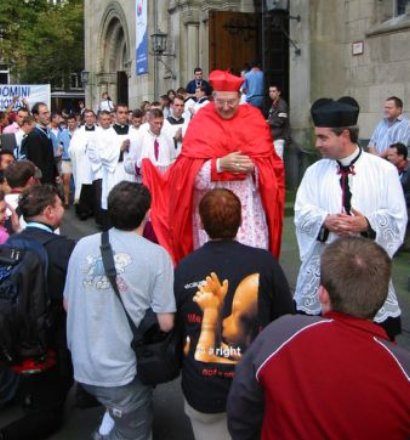
His Eminence George Cardinal Pell, the Archbishop of Sydney, happily donned the traditional (and these days rarely seen) cappa magna during his presence amongst the Juventutem pilgrims at the recent World Youth Day in Germany. His Eminence, known for his Australian candor, is seen above blessing young folks outside the Düsseldorf church designated for the use of the Juventutem traditional Catholic youth.
The Catholic Encyclopedia informs us that the “great cope” is not a liturgical vestment per se but rather a glorified version of the cappa choralis (choir cope), and is reserved for cardinals, bishops, and certain privileged prelates.
Photos from the FSSP.
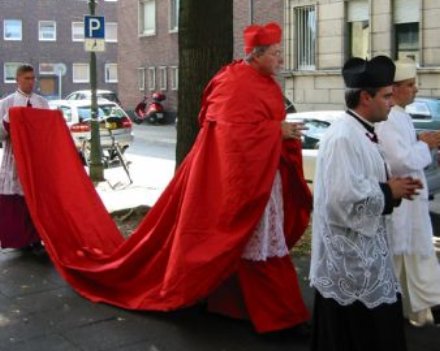
The Owl Shop, New Haven
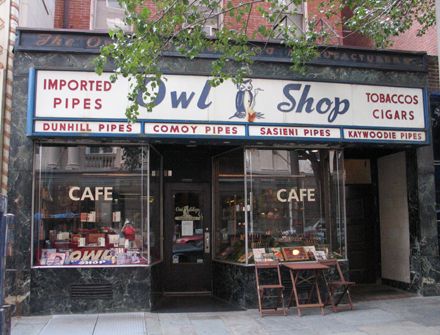
MAKING ONE OF my occasional forays into the neighboring state of Connecticut yesterday afternoon I was introduced to a little corner of paradise. A friend and I were going to partake in an evening with a club at Yale of which he was formerly president. As a mark of his completed tenure in the office he desired to purchase a pipe to donate to said organization, which brought us to an institution with which I was previously unacquainted. (more…)
Lord Dacre
The Daily Telegraph‘s recent remembrance of Maurice Cowling relays the following tale:
Invitations to the club carried a seal reading: “I’d stake my reputation on it.” Dacre was said to have retaliated by comparing Cowling’s circle to “a band of social outcasts living in a mountain cave under the command of a one-eyed Cyclops”.
There’s nothing so spiteful as an academic rivalry! I remember meeting the late Lord Dacre in Oxford about two years before his death. He was by then an ancient man, and the organiser of the assembly tried to make us feel impressed and privileged that we were able to meet such a man. I’m afraid, however, we took advantage of the Baron’s poor hearing and kept on whispering to eachother “Don’t mention the Hitler diaries!” (in the manner of Basil Fawlty’s “Don’t mention the War!” on Fawlty Towers). What can I say, we were young. At any rate, I hope the Authenticators still exist.
The Story of Notre Dame de Bon Secours
The background story to Nôtre Dame de Bons Secours, from the Catholic Community Forum:
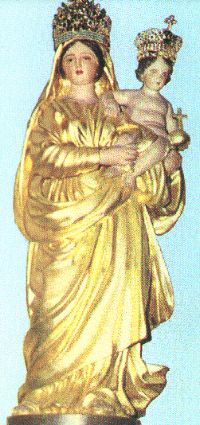 In 1727, French Ursuline nuns founded a monastery in New Orleans, Louisiana, and organized their area schools from it. In 1763 Louisiana became a Spanish possession, and Spanish sisters came to assist. In 1800 the territory reverted back to France, and the Spanish sisters fled in the face of France anti-Catholicsm. In 1803, short on teachers, Mother Saint Andre Madier requested reinforcements in the form of more sisters from France. The relative to whom she wrote, Mother Saint Michel, was running a Catholic boarding school for girls. Bishop Fournier, short-handed due to the repressions of the French Revolution, declined to send any sisters. Mother Saint Michel was given permission to appeal to the pope. The pope was a prisoner of Napoleon, and it seemed unlikely he would even receive her letter of petition. Mother Saint Michel prayed,
In 1727, French Ursuline nuns founded a monastery in New Orleans, Louisiana, and organized their area schools from it. In 1763 Louisiana became a Spanish possession, and Spanish sisters came to assist. In 1800 the territory reverted back to France, and the Spanish sisters fled in the face of France anti-Catholicsm. In 1803, short on teachers, Mother Saint Andre Madier requested reinforcements in the form of more sisters from France. The relative to whom she wrote, Mother Saint Michel, was running a Catholic boarding school for girls. Bishop Fournier, short-handed due to the repressions of the French Revolution, declined to send any sisters. Mother Saint Michel was given permission to appeal to the pope. The pope was a prisoner of Napoleon, and it seemed unlikely he would even receive her letter of petition. Mother Saint Michel prayed,
O most Holy Virgin Mary, if you obtain for me a prompt and favorable answer to this letter, I promise to have you honored at New Orleans under the title of Our Lady of Prompt Succor.
and sent her letter on 19 March 1809. Against all odds, she received a response on 29 April 1809. The pope granted her request, and Mother Saint Michel, commissioned a statue of Our Lady of Prompt Succor holding the Infant Jesus. Bishop Fournier blessed the statue and Mother’s work.
Mother Saint Michel and several postulants came to New Orleans on 31 December 1810. They brought the statue with them, and placed it in the monastery chapel. Since then, Our Lady of Prompt Succor has interceded for those who have sought her help.
A great fire threatened the Ursuline monastery in 1812. A lay sister brought the statue to the window and Mother Saint Michel prayed
Our Lady of Prompt Succor, we are lost if you do not come to our aid.
The wind changed direction, turned the fire away, and saved the monastery.
Our Lady interceded again at the Battle of New Orleans in 1815. Many faithful, including wives and daughters of American soldiers, gathered in the Ursuline chapel before the statue of Our Lady of Prompt Succor, and spent the night before the battle in prayer. They asked Our Lady for the victory of the American forces over the British, which would save the city from being sacked. General Andrew Jackson and two hundred men from around the South won a remarkable victory over a superior British force in a battle that lasted twenty-five minutes, and saw few American casualties.
It is still customary for the devout of New Orleans to pray before the statue of Our Lady of Prompt Succor whenever a hurricane threatens New Orleans.
Hat tip: Irish Elk. The image used below is of the National Shrine of Our Lady of Prompt Succor in New Orleans.
Search
Instagram: @andcusack
Click here for my Instagram photos.Most Recent Posts
- Amsterdam November 26, 2024
- Silver Jubilee November 21, 2024
- Articles of Note: 11 November 2024 November 11, 2024
- Why do you read? November 5, 2024
- India November 4, 2024
Most Recent Comments
- on The Catholic Apostolic Church, Edinburgh
- on Articles of Note: 11 November 2024
- on Articles of Note: 11 November 2024
- on Why do you read?
- on Why do you read?
- on University Nicknames in South Africa
- on The Situation at St Andrews
- on An Aldermanian Skyscraper
- on Equality
- on Rough Notes of Kinderhook
Book Wishlist
Monthly Archives
Categories

